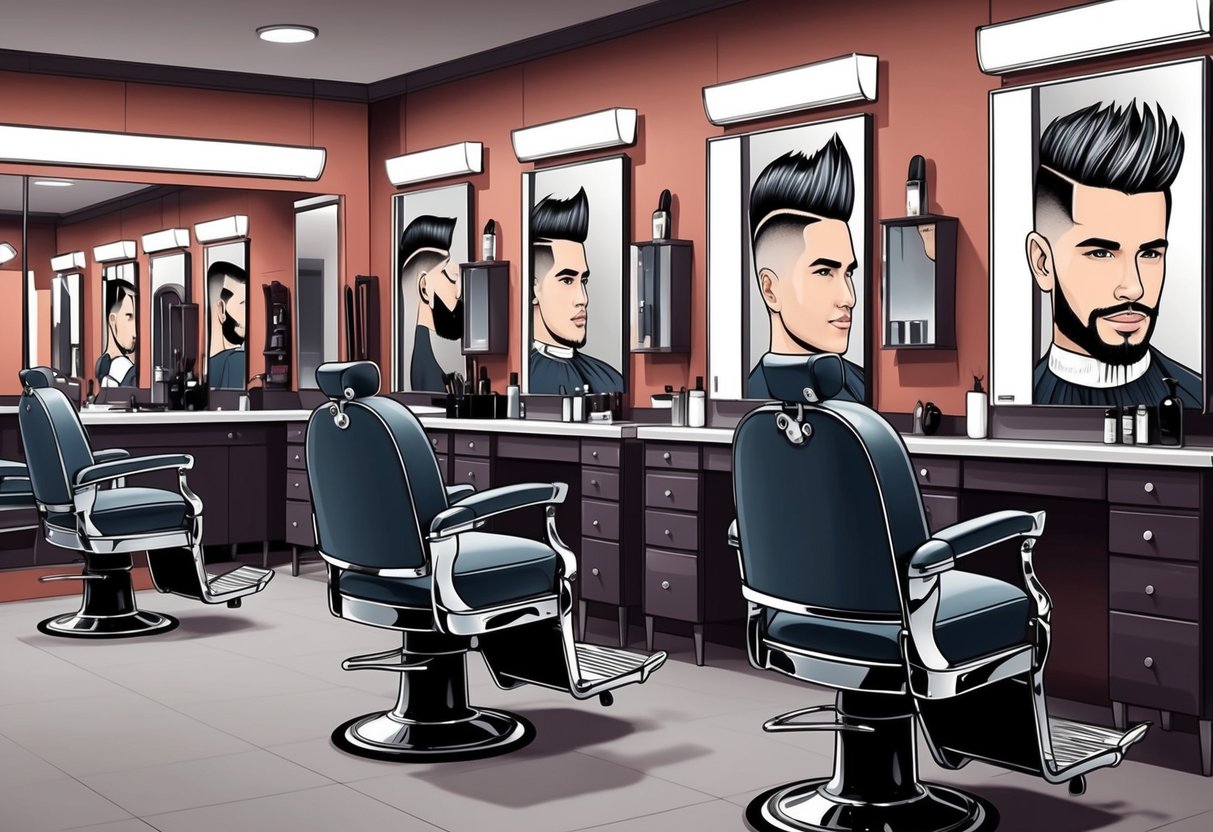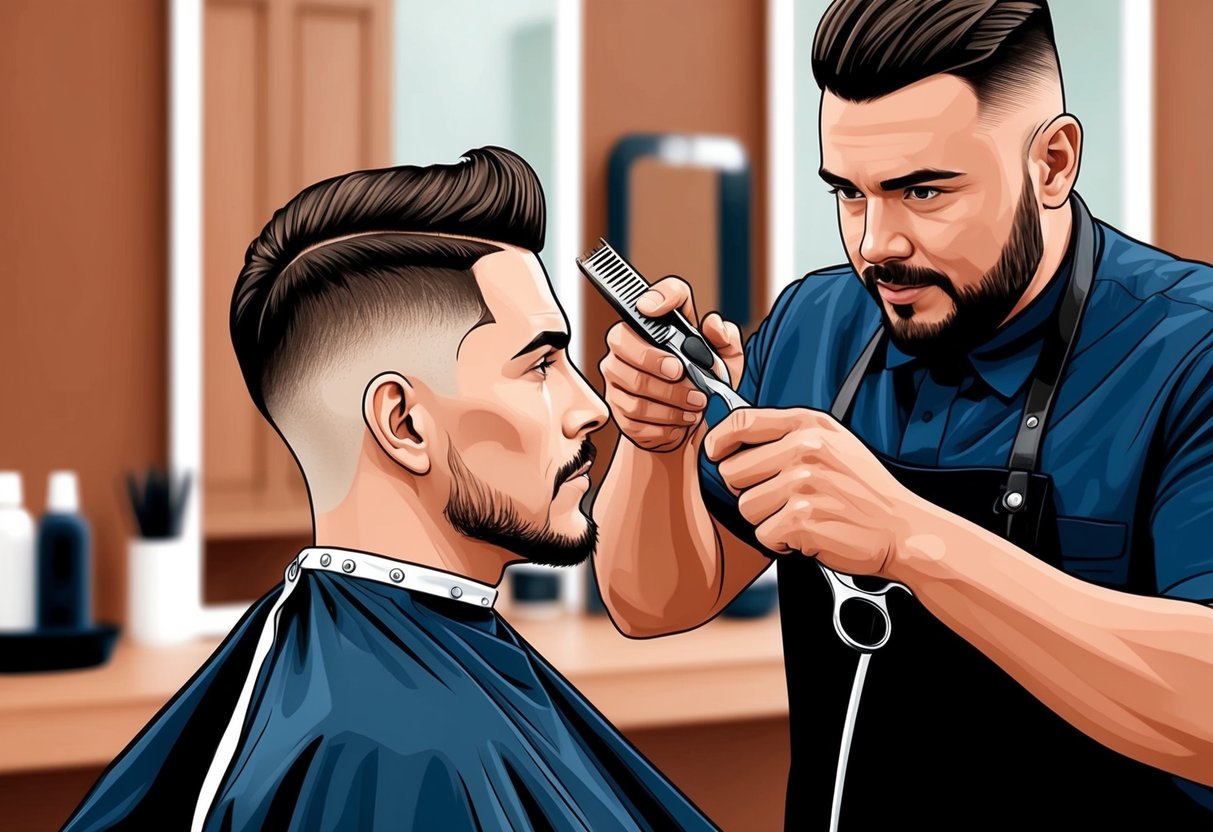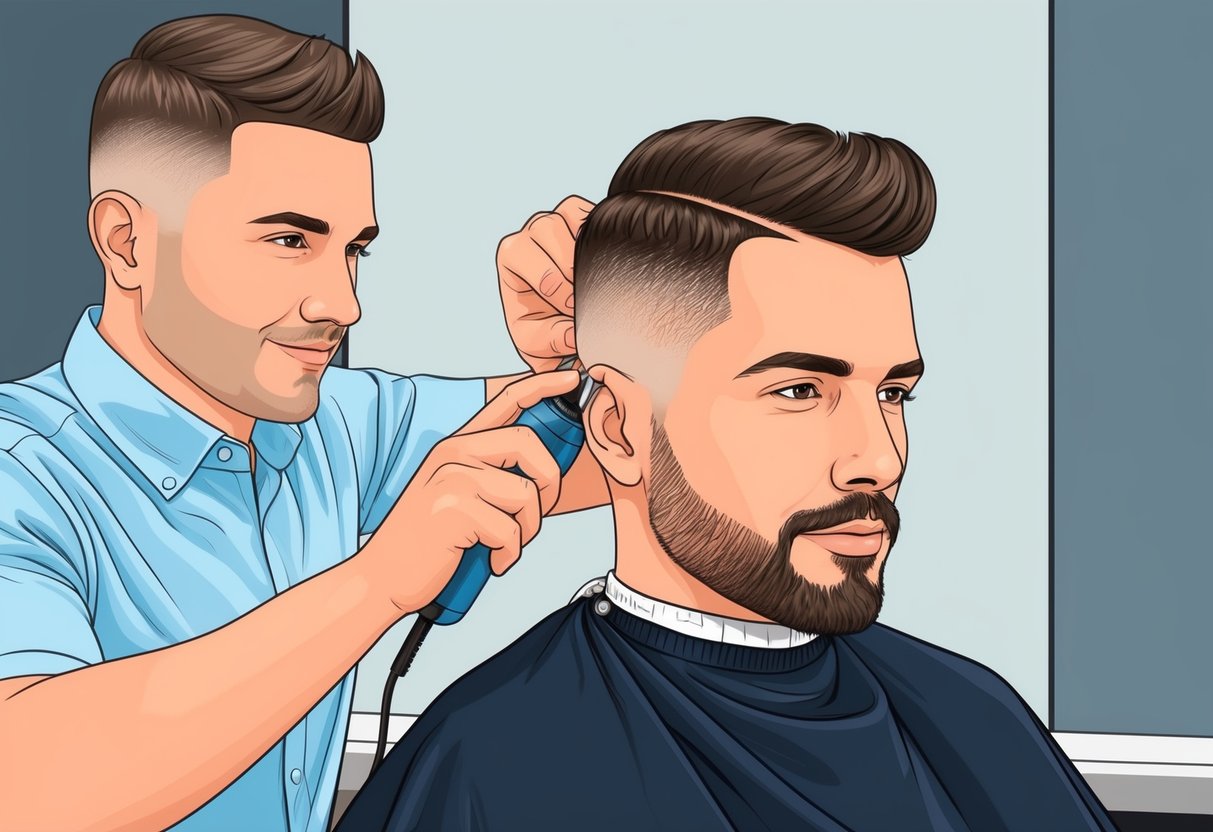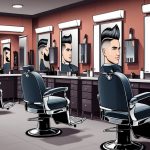
Faux Hawk Fade
A faux hawk fade is a versatile style that creates a bold, contained crest on the top of the head. The sides and back feature a fade—frequently mid or high—blending into the remaining hair, which is styled upward and toward the center.
Unlike a classic mohawk, the length on top remains moderate, making this look appropriate for both casual and professional settings. The styling process involves using matte clay or pomade to shape the hair into a peak.
This cut adapts well to straight, wavy, and curly hair types. Barbers can tailor the height and angle of the faux hawk to suit individual features while incorporating clean, sharp fade transitions.
For visuals and extra guidance, check out this comprehensive guide to the best fade haircuts.
How to Maintain and Style a Fade Haircut

Maintaining a fade haircut requires a combination of the right hair products and consistent grooming habits. The key is preserving clean lines and texture, while keeping the style sharp and adaptable for any hair type.
Essential Hair Products
Using the right products helps maintain the crisp look of a fade and keeps hair healthy. A light hold pomade or matte clay enhances definition without weighing hair down.
These products work well for most fade types, from low fades to high fades, providing control and a natural finish. Sea salt spray is effective for adding volume and texture, especially for wavy or curly hair.
For daily washing, a gentle sulfate-free shampoo and a lightweight conditioner keep the scalp and hair clean without stripping away moisture. To prevent dryness or irritation around the faded areas, a soothing leave-in conditioner or moisturizing oil can help.
People with thick or curly hair may benefit from using a curl cream to control frizz and define patterns.
Recommended Products Table:
| Product Type | Purpose | Suitable For |
|---|---|---|
| Pomade/Clay | Hold, texture | All fade styles |
| Sea Salt Spray | Volume, texture | Wavy/curly fades |
| Sulfate-Free Shampoo | Gentle cleansing | All hair types |
| Leave-In Conditioner | Moisture balance | Dry/curly hair |
Daily Upkeep Tips
Keeping a fade looking sharp calls for frequent touch-ups and attention to detail. Regular visits to the barber, usually every 2 to 3 weeks, help maintain clean transitions and a fresh appearance.
Trimming around the neckline and ears at home with a small trimmer can extend the time between professional cuts. Washing hair every other day prevents build-up without overdrying the scalp.
It’s important to use lukewarm water and avoid harsh scrubbing, as this can disturb the faded areas. Combing or brushing hair daily helps distribute natural oils and maintain the style’s shape.
When styling in the morning, applying a small amount of product and using fingers or a comb creates a well-groomed appearance. Those with tighter curl patterns can use a soft brush or sponge to define the fade.
Protecting hair at night with a silk or satin pillowcase also helps reduce frizz and preserve the haircut’s structure. For more tips, check out the GQ Guide to Fade Haircuts.
Incorporating Fades with Facial Hair

Pairing fade haircuts with facial hair can dramatically enhance sharpness and definition, helping to frame the face and highlight strong features. Achieving a clean, cohesive look depends on a careful balance between hair length, fade style, and beard grooming techniques.
Blending Fades and Beards
A smooth transition from the hair fade into facial hair is key for a polished appearance. Barbers often use clippers with several guard lengths to gradually merge the sideburn into the beard, reducing harsh lines.
Low fades typically flow seamlessly into fuller beards, offering a structured look that suits square or oval faces. High fades can work with short, tailored beards or stubble for a modern, low-maintenance effect.
Maintaining symmetry is crucial. The fade should mirror the thickness and lines of facial hair, as mismatched lengths can appear unkempt.
Strategic use of trimmers ensures an even blend and helps keep the neckline crisp. Subtle, tapered edges at the cheek and jawline add definition and make the style look intentional.
For those seeking more guidance, resources like a comprehensive guide to different types of fades offer advice on matching face shape and fade type.
Grooming Tips for Combined Styles
Frequent maintenance is essential when pairing fades with facial hair. He should trim both the fade and beard every one to two weeks to maintain a fresh appearance and prevent overgrowth.
Using a beard conditioner or oil helps soften facial hair and minimize irritation along the transition zone. This creates a neater blend.
Hairs along the fade line should be brushed down before cutting to spot stray or uneven patches. Outlining the edges of the beard with a razor or precision trimmer results in a sharper finish.
For best results, he could follow a routine:
- Wash and condition both hair and beard
- Comb and detangle
- Trim regularly
- Define edges
Matching the style of the beard to the fade—such as pairing a fuller beard with a low fade or a close-cropped beard with a skin fade—results in a cohesive, stylish look. This approach is easy to maintain and complements various hair and face types.



